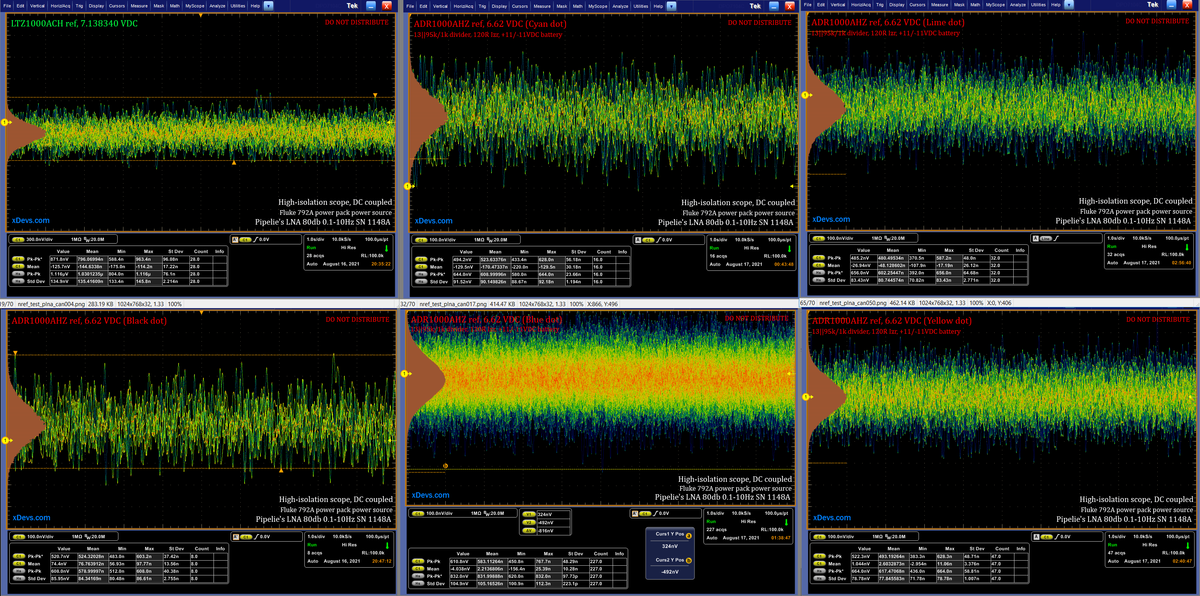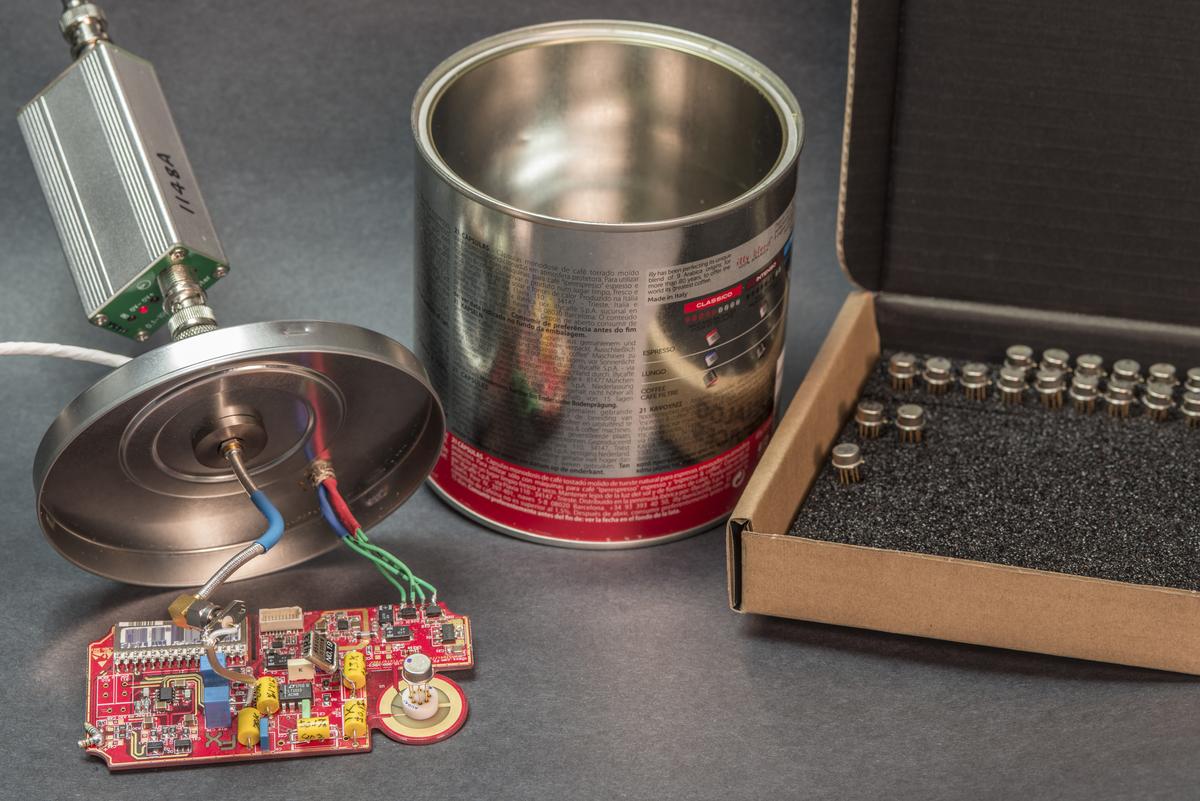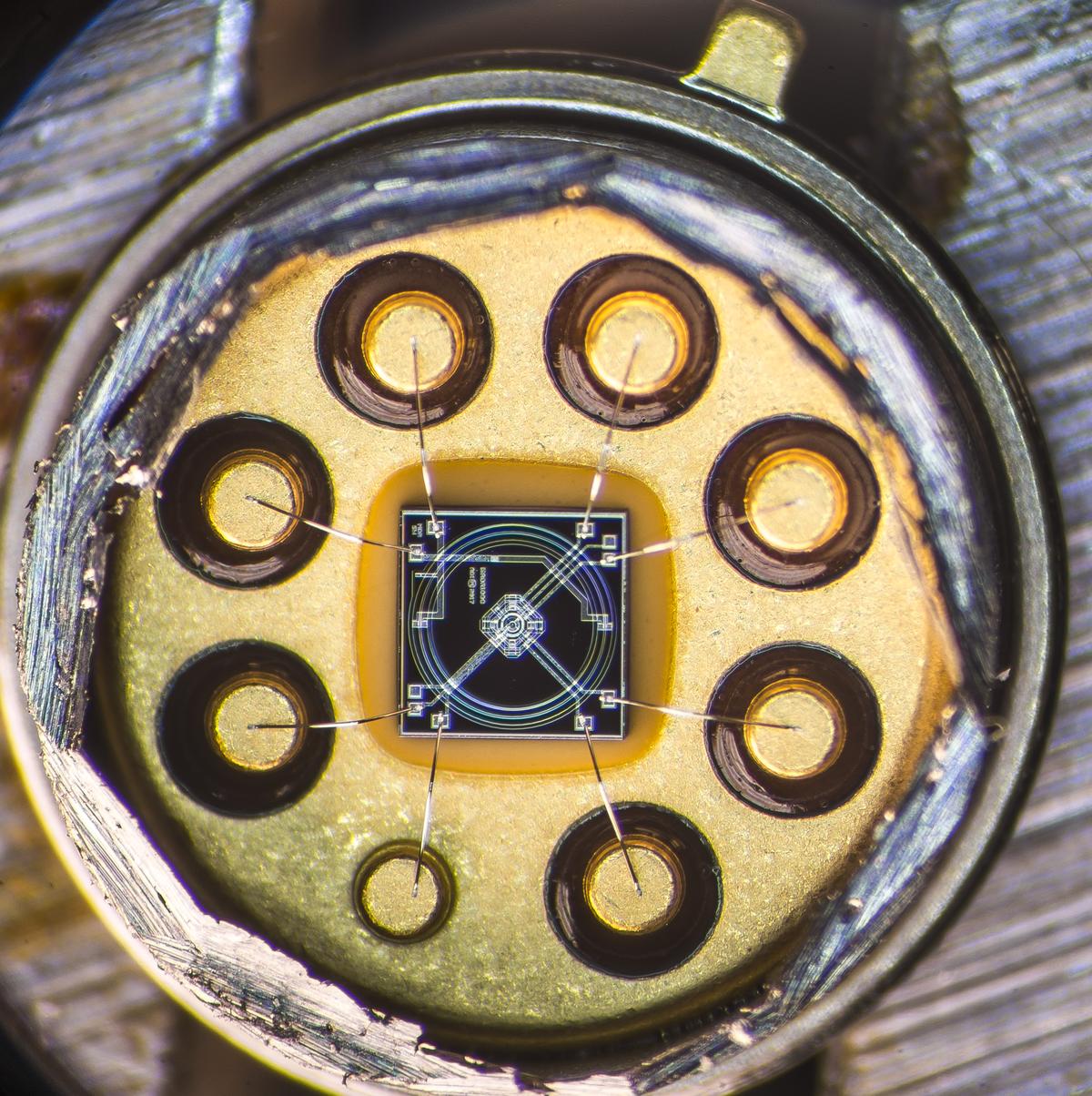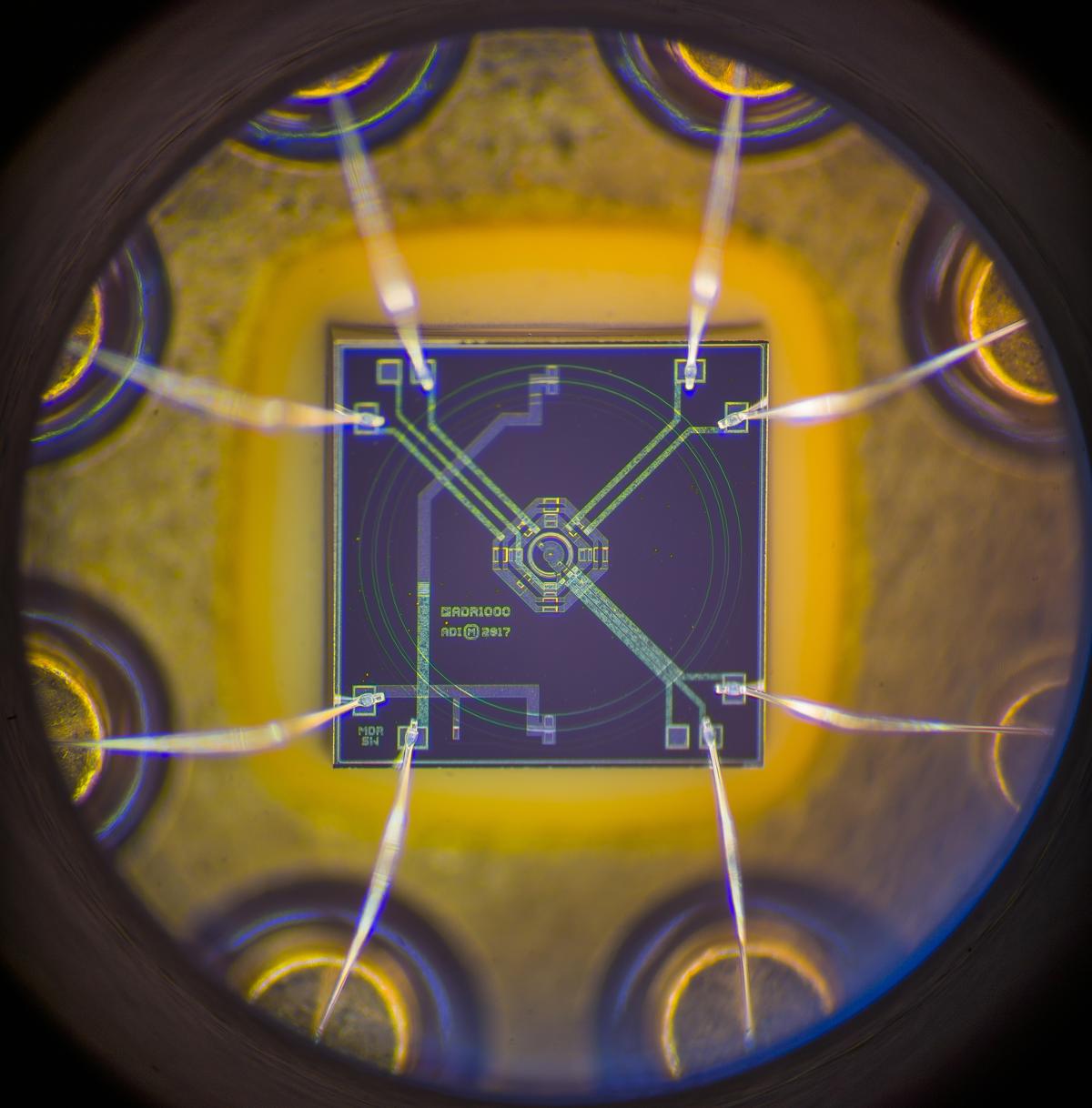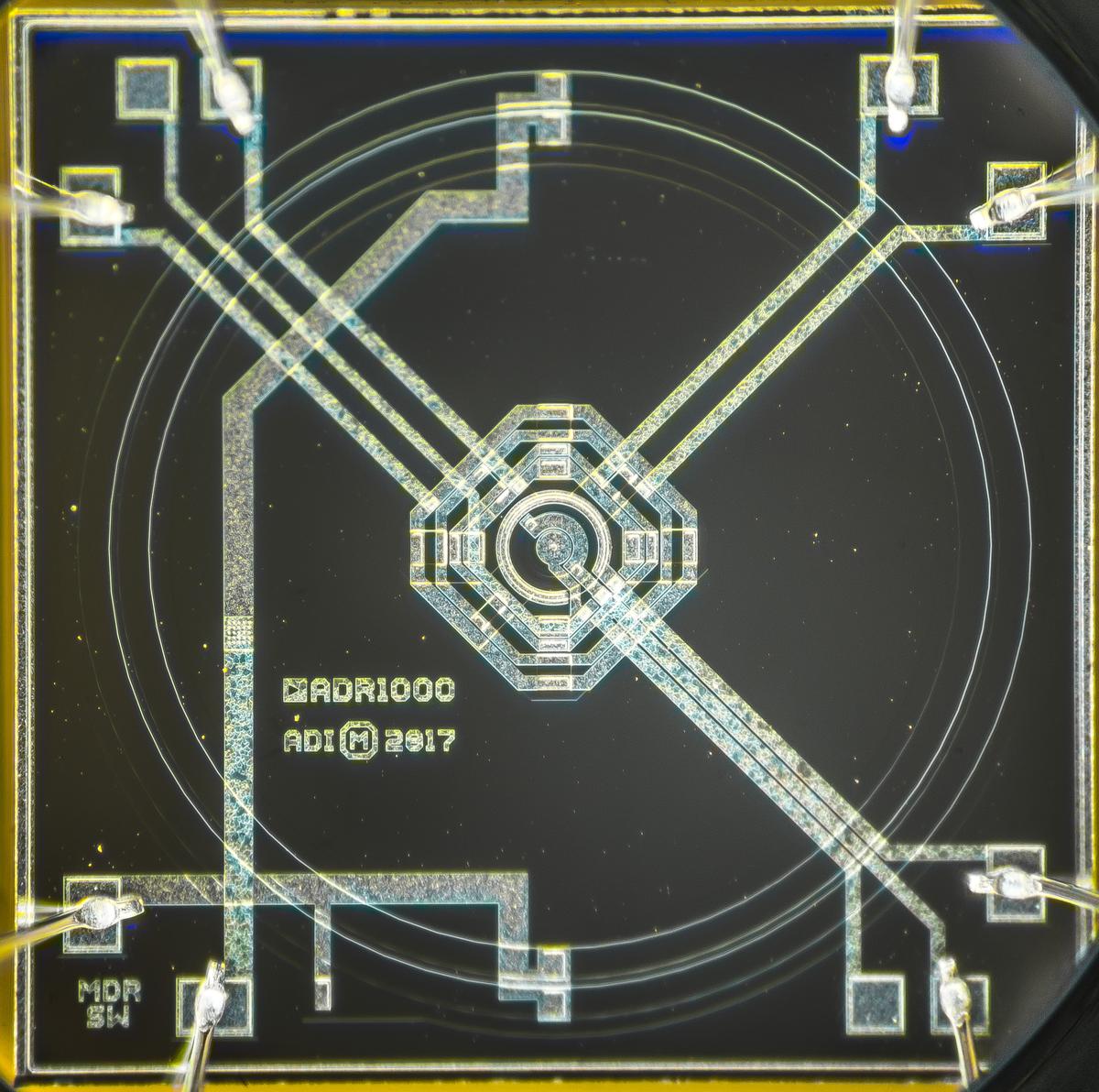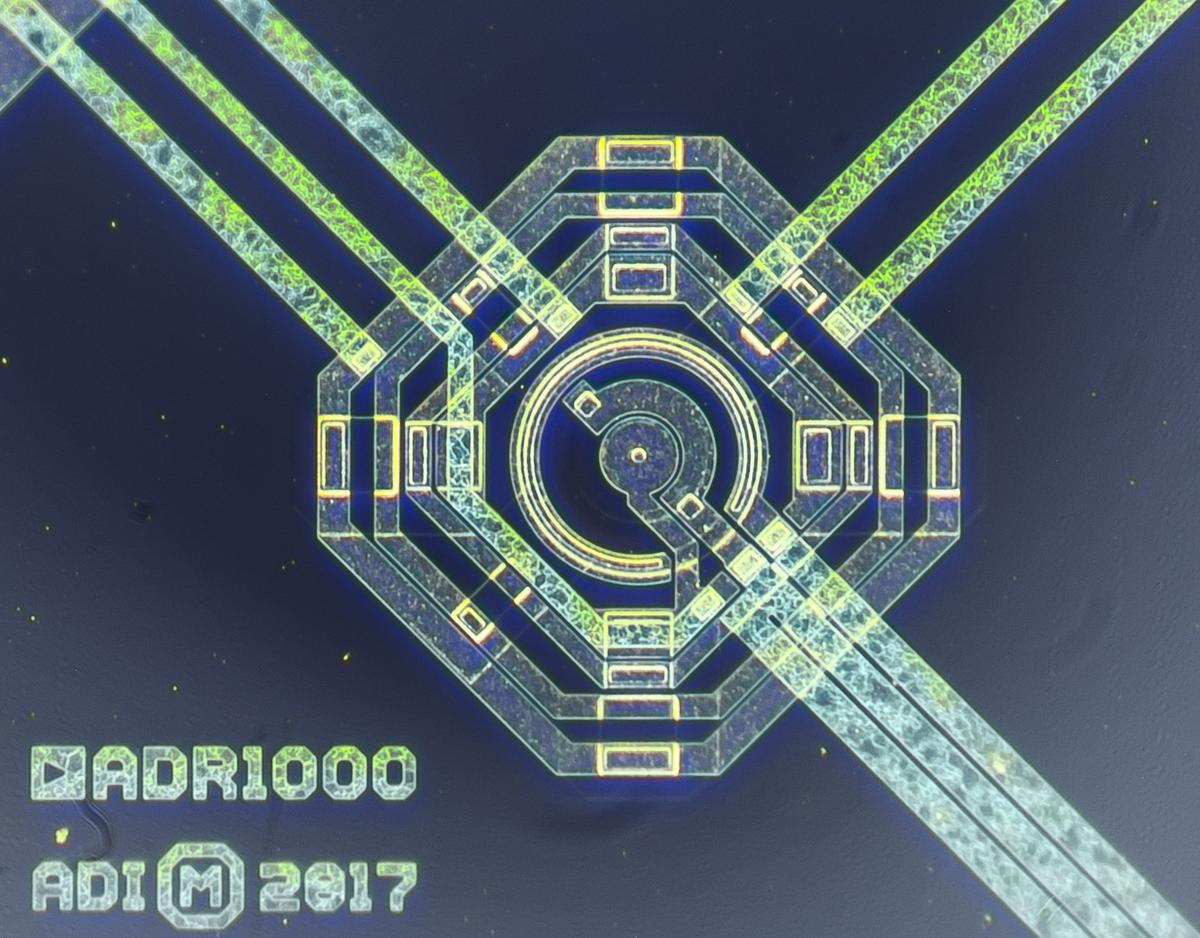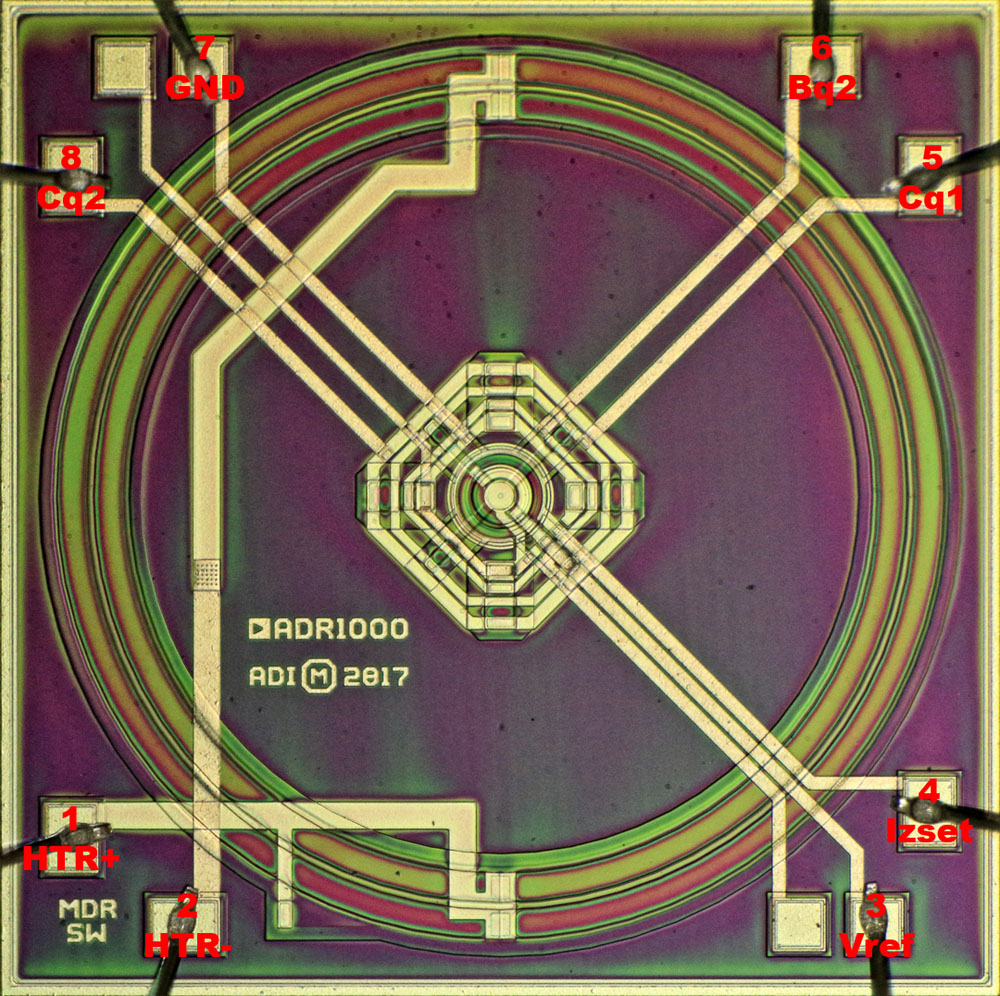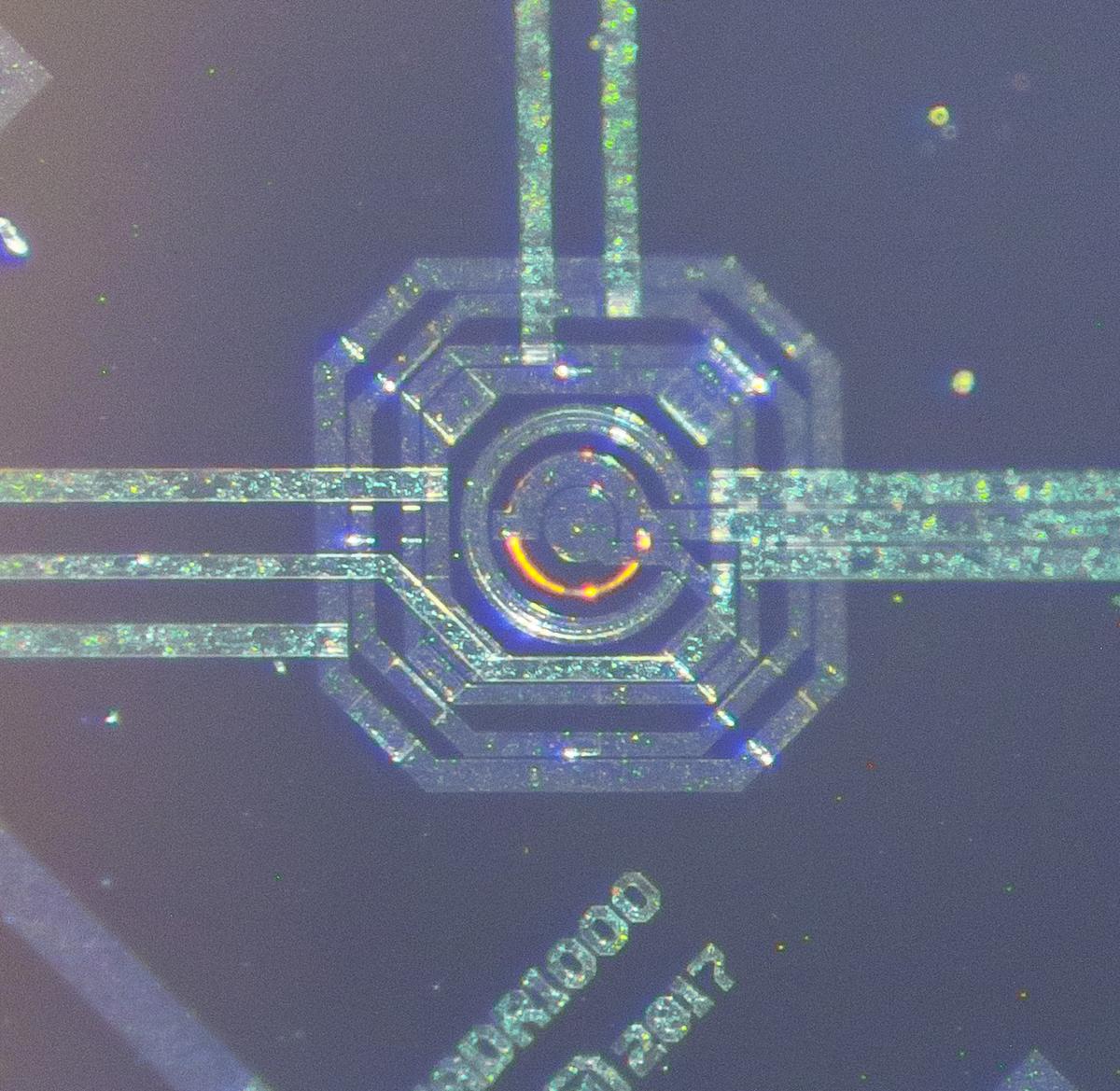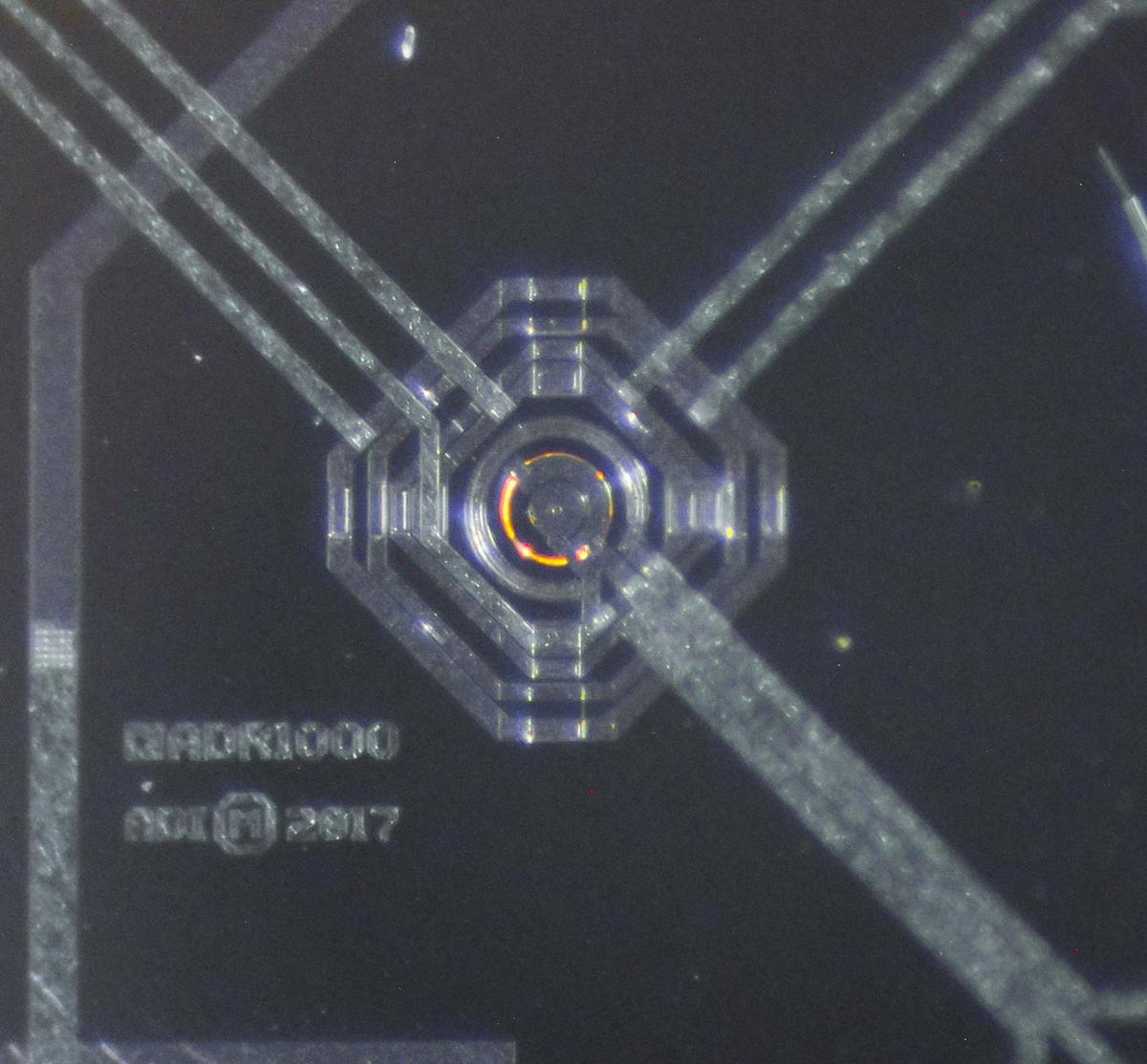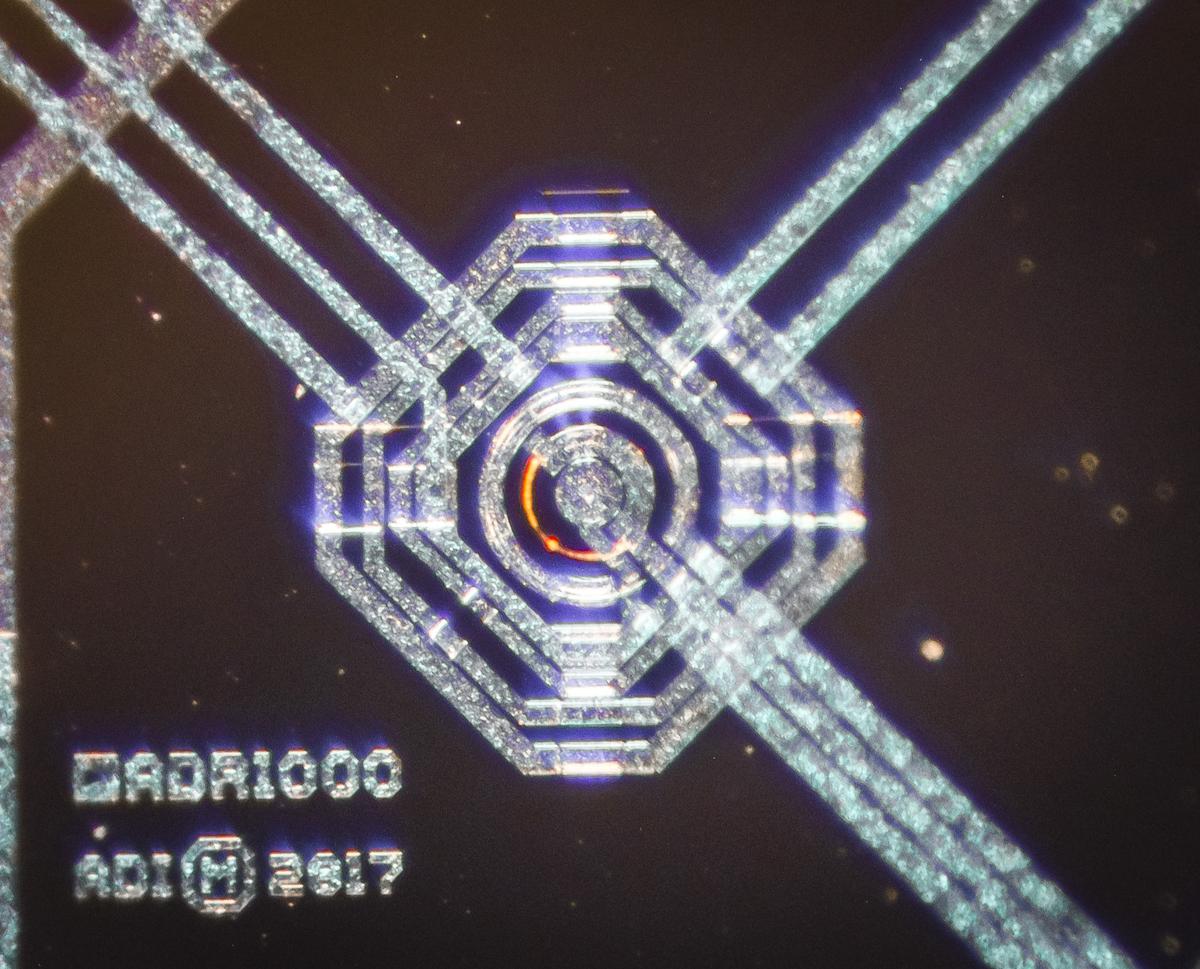At Metrology Meeting 2021 (held on 11th September 2021, organized by André Bülau, Hahn-Schickard Stuttgart) Eric Modica from ADI presented insights of ADR1000 and ADR1001 development to the volt-nut and precision metrology community. During the talk Rui Zhou and Carlos Sanchez (both also from ADI) agreed to make ADR1000 more available to the community. As result of these efforts precision group at Analog Devices made a holiday for all metrology enthusiasts and volt-nuts! They done so by letting us purchase new ADR1000 reference chips.
Lot of readers and analog design engineers know and hail the best in the world LTZ1000CH and LTZ1000ACH zeners from Linear Technologies. These chips were designed and went into production from 1983, very good 38 years ago. Together with LMx99 series references it was essentially the only solution widely adopted in precision instrumentation and electronics, be it 8½-digit DMM like HP 3458A or solid-state DC voltage standards, such as Datron 4910.
xDevs.com have published lot of results and benchmarks of stellar performance of LTZ chips, repaired many instruments that used these and have multiple open-hardware and not own circuit designs with it.
Analog Devices did not leave LTZ untouched king forever. Since 2016 ADI team worked hard on new and improved buried zener reference to beat LTZ1000 legacy. Since this is rather niche and not easy to use component all development was kept under cover and available only to few big names in the industry for preliminary validation and feedback.
New reference has own unique part number ADR1000AHZ and supplied in similar 8-pin hermetic package. It is even pin-compatible with existing LTZ1000, but require slight electrical circuit modifications to operate at best performance point. Part went into production end of 2018, with most of samples and devices distributed from week 39 year 2018 production run.
ADR1000AHZ is somewhat undercover component that have limited ADI technical support and public listings. Until recently there was no public web-page with all usual goodies for this ADR1000 product. As of 2021 year trying to navigate for ADR1000 page on Analog Devices fancy site only returns pretty, but useless Error 404:

Now in 2022 year new ADR1000 page is live and good with development eval board and technical information available.
People who commercially use LTZ/ADR references are already very experienced analog/precision circuit designers and many of them perform own validation, burn-in and selection processes. Testing such references to fraction of PPM stability is lengthy and expensive process, and not much ADI can do without investing lot of man-hours on each support case.
Datasheet for ADR1000 was leaked in August 2021 on EEVBlog forum. Originally datasheet made available only upon special request to ADI by existing customer accounts/FAEs. Due to design and process improvements ADR1000 shows about 35-40% lower voltage noise compared to LTZ1000 at expense of slightly higher power consumption. It has also reduced output voltage from 7.2-ish VDC to 6.62-ish VDC with improved tolerance window. Zener die thermal insulation is similar to LTZ1000CH but much worse to special LTZ1000ACH construction, so it’s not a best part for battery-operated instruments and/or thermally sensitive designs. LTZ1000ACH used glass beads, such as these for further electrical and thermal decoupling between silicon die and metal TO-5 case.
How to order?
To order this new special ADR1000 reference follow next procedure:
- Login into myAnalog Analog Devices customer portal. You must have existing account or register a new one, using good email and information.
- Go to the shopping cart (click cart icon on website’s top bar).
- In the field “Enter exact model #” type in ADR1000AHZ, select purchase radio button and press Add to Cart
- This should add item into listing table.
- Modify quantity to desired amount and proceed with checkout, shipping and payment information as usual.

As for SEP.16.2021 minimum order quantity for ADR1000AHZ to process is 5 pieces per customer. Do not request samples, there are no samples available for ADR1000AHZ.
Analog Devices team will monitor the customer demand for a period of at least six months to understand if this is a viable (sustainable) path of distribution for business reasons. Hopefully metrology enthusiasts and analog designers will order enough parts for ADI to consider having ADR1000AHZ and other new references (yes, more models will be available next year) listed on their web-site. Perhaps they would also consider supplying retailers with some amount of chips for easier worldwide logistics.
Right now (SEP.16.2021) ADR1000AHZ are in stock. Customers in USA, Canada and Mexico can place order as normal, while customers in other countries, EU, UK required to provide their tax information for (like business VAT) to complete the purchase. In few cases there were issues with personal VAT not being accepted and ADI refunding & cancelling the order, beware.
Both LTZ1000CH and LTZ1000ACH chips are still in production, despite very long lead-times and very limited availability, just like with many other semiconductor components in 2021-2022. Much more years required for ADR1000 to be recognized and trusted in industry before it is called as successful LTZ1000 killer and replacement.
Pricing trend for chips is shown in table below:
| Component part number | 1-99 pcs | 100-999 pcs | 1000+ pcs |
|---|---|---|---|
| LTZ1000CH#PBF | $53.56 USD | $45.88 USD | $44.00 USD |
| LTZ1000CH#PBF, October 2022 pricing | $57.31 USD | $49.09 USD | $47.08 USD |
| LTZ1000ACH#PBF | $68.13 USD | $58.38 USD | $56.00 USD |
| LTZ1000ACH#PBF, October 2022 pricing | $72.90 USD | $62.47 USD | $59.92 USD |
| LTZ1000ACH#PBF, January 2023 pricing | $98.45 USD | $89.88 USD | ? |
| LTZ1000ACH#PBF, April 2024 pricing | $87.48 USD | ? | ? |
| ADR1000AHZ, September 2021 pricing | $61.67 USD | $59.30 USD | $51.56 USD |
| ADR1000AHZ, May 2022 pricing | $64.75 USD | $62.27 USD | $54.14 USD |
| ADR1000AHZ, October 2022/select pricing | $69.28 USD | $66.63 USD | $57.93 USD |
| ADR1000AHZ, April 2024 pricing | $83.14 USD | $79.96 USD | $ USD |
Order tracking
As community service would be interesting to see how many chips volt-nuts ordered, so we get overall idea for this niche product demand. If you want to report amount of chips you got ordered for this, feel free to share.
| Member | Order date | Chips ordered |
|---|---|---|
| ….. | AUG.11.2021 | [**] |
| ….. | SEP.16.2021 | 5 |
| .. | SEP.16.2021 | 15 |
| …. | SEP.16.2021 | 5 |
| ……. | SEP.16.2021 | 5 |
| .. | SEP.17.2021 | 15 |
| …… | SEP.17.2021 | 5 |
| ….. | SEP.17.2021 | 5 |
| ….. | SEP.17.2021 | 5 |
| …. | SEP.18.2021 | 25 |
| …… | SEP.27.2021 | 10 |
| A… | OCT.3.2021 | 5 |
| …. | November 2021 | 5 |
Total so far Analog Devices delivered to hobby/enthusiast customers: at least 170 pcs. Hopefully these quantities are enough for Analog Devices sales teams to justify availability for the private/personal use orders, from anyone interested in precision voltage references, not just big well-known bulk buy customers.
Parts are expected to be shipped from Singapore, then reshipped locally by ADI.
Update from December 2021 – ADR1000 are no longer available from ADI Direct, and MOQ update.
Sadly the initial amount of production run with ADR1000 chips seem to be already depleted and these new devices are no longer in stock on Analog Devices website cart.

Also minimum order quantity is increased from 5 pcs to whole tube with 100 pcs, making these unaccessible to small businesses and niche prototyping work for precision analog design.
Recent attempts with group order in Europe also failed in a big way . There is nothing much to complain about, since ADI highlighted multiple times that these devices would not be supported or on retail market and intended only for big players.
We can only hope that MOQ would be reduced again once there is more stock in year 2023…
What about LM399 refresh part?
It is also released now and available as ADR1399. Part number to order is ADR1399KHZ.

Richi’s Lab had already torn one apart to reveal us beautiful images of updated ADR1399 construction. Older LM399 page was also updated.
Is it worth the trouble? Show us some data!
It is not exactly cheap part to just randomly buy and hope to use it in some project later. Most of customers are ready to invest hundreds of hours into LTZ/ADR1000 projects and good amount of money to get best performance possible for voltage stability. Just on EEVBlog metrology section alone you can found tens of threads digging into one or another aspect of these buried ovenized zener ICs.
Results and publications are necessary to help justify such efforts. xDevs.com was not standing aside in this task and we also got some initial amount of chips to start on some new exciting ideas.
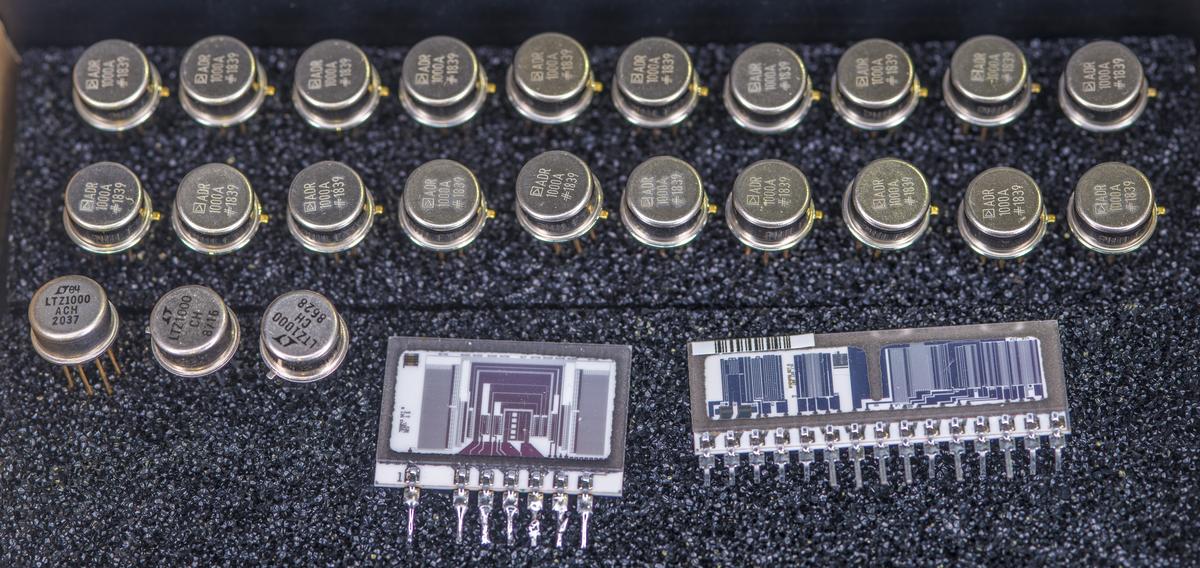
First quick tests show promising noise performance compared to old LTZ1000A.
Please note different 300nV/div vertical voltage scale on LTZ1000ACH (top left scope capture window) compared to 100nV/div all other windows for ADR1000AHZ results.
This benchmark was performed in 0.1 – 10 Hz bandwidth using low-noise AC-coupled preamplifier and Tektronix DPO7104C oscilloscope via high-isolation transformer. Reference was installed on xDevs.com FX PCBA in metal can and powered by battery Fluke 792A Power Pack to ensure no grounding issue and common noise leakage.
Bonus content, first public die photograph of ADR1000AHZ?
Couldn’t resist opening one up, to peek on a die markings and design of the chip. Here you can enjoy it as well. All photos were done with microscope and old trusty Nikon D800 DSLR
Top cover was carefully milled out, revealing beautiful and deceptionally simple silicon die, wirebonding and die attach epoxy.
Zooming towards die shows overall very similar to LTZ1000 design. Most glaring difference from the visual perspective – there is only one heater ring now.
Chip close-up :
Core label have mask date code 2017 and Analog Devices logo and part number. Keep in mind that this design was done before ADI acquired and merged with Linear Technology, which makes it even more interesting and special.
We can also see MDR and SW initials in the bottom left corner. These are initials of key project designers.
And finally, animated GIF with both LTZ1000A die from 1983 and ADR1000AHZ from 2017.
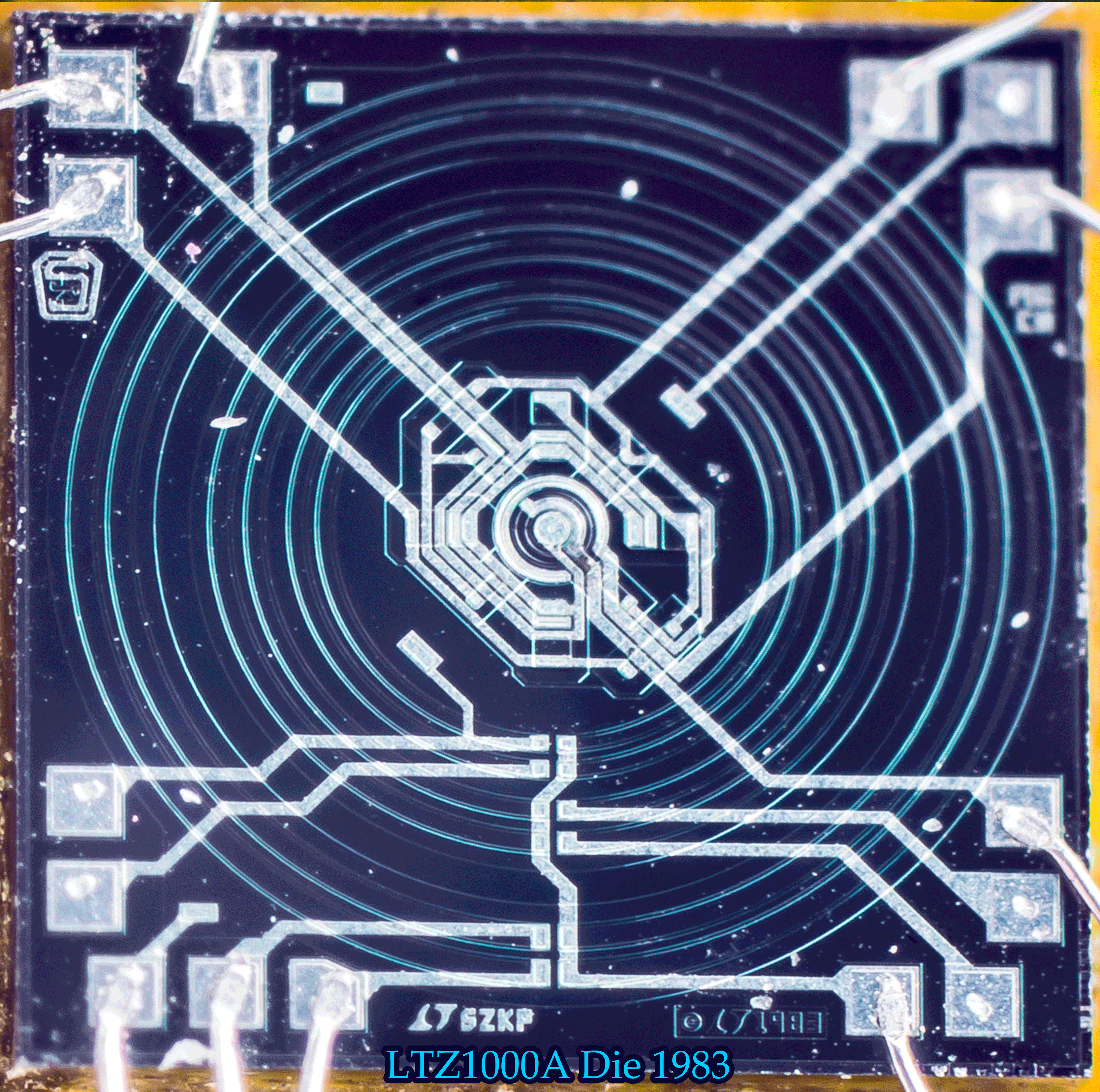
Richi’s Lab also did a teardown recently on one of the ADR1000 chips. His photowork is always delivering spectacular quality. Be sure to check his amazing web-site collection as well:
Light show with ADR1000AHZ chip
Insipred by Richi’s lab and chuckb’s experiments to capture visible light from LTZ1000A we can repeat same here with ADR. Receipe does not require anything special, just decapped ADR chip in regular circuit, under power and in complete darkness.
To capture following photos ISO1600 30 second exposure was used, with help of photoflash to highlight the structures on a die. Zener current was set at 4055 µA and oven temperature around +52 °C.
Same chip and configuration, but this time in infrared imaging :
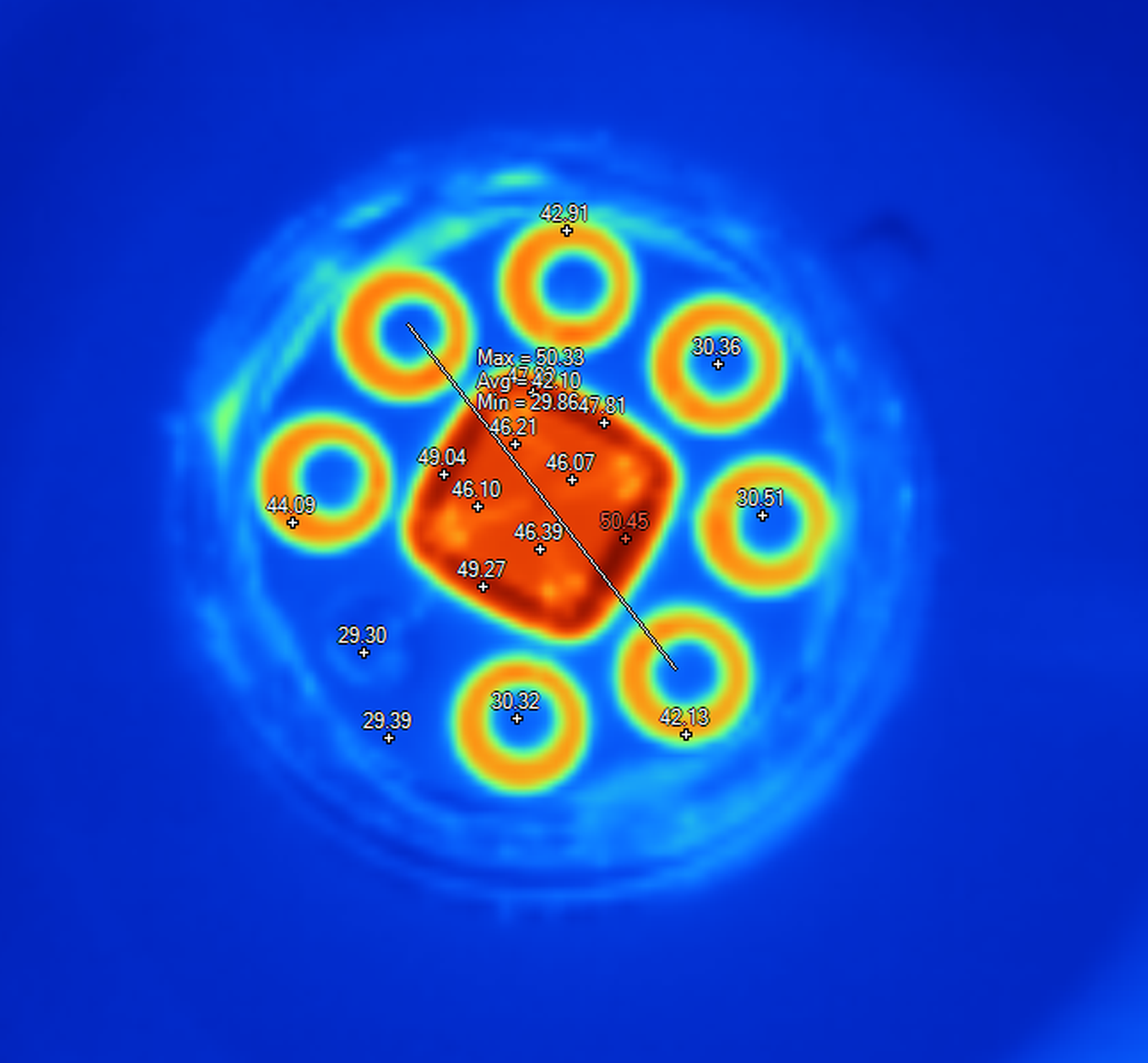
Drift testing
Update from November 2022. Few ADR1000-based zener references were built and are currently under testing phase.
HP 3458A A9 PCBA modified with ADR1000 (11.8 kΩ | 1 kΩ divider, 111 Ω Izener resistor). Installed in HP3458A for testing mod ideas.
| Device | Voltage measured | Date | Deviation | LTD linear estimate |
|---|---|---|---|---|
| New ADR1000AHZ chip, no special aging | 6.62684647 VDC ±0.8 ppm | 22.AUG.2022 | Reference | Reference |
| = same = | 6.62679967 VDC ±0.6 ppm | 13.NOV.2022 | -7.06 ppm / 83 days | -31 ppm/year or -0.085 ppm/day |
| = same = | 6.62680892 VDC ±1.4 ppm | 20.SEP.2023 | -5.67 ppm / 394 days | -5.3 ppm/year or -0.014 ppm/day |
| = same = | 6.62680799 VDC ±1.6 ppm | 23.JAN.2024 | -5.81 ppm / 519 days | -4.1 ppm/year or -0.011 ppm/30d |
More to come, stay tuned. xDevs.com already have lot of crazy ideas such as :
- Modification to some commercial 8½-digit DMMs with ADR to improve their performance results.
- DIY low-noise 10V DC Voltage standard projects that would easily beat top world-class units like Fluke 732C, Datron 4910 and alike
- Ultra-low noise transfer standards to aid better uncertainty between Quantum Voltage standard transfers.
- Low-noise voltage and current sources for various physical and electrical experiments
- Better sources that can replace Fluke 5720/5730A and similar top tier calibrators in bridge setups
And many more…
Projects like this are born from passion and a desire to share how things work. Education is the foundation of a healthy society - especially important in today's volatile world. xDevs began as a personal project notepad in Kherson, Ukraine back in 2008 and has grown with support of passionate readers just like you. There are no (and never will be) any ads, sponsors or shareholders behind xDevs.com, just a commitment to inspire and help learning. If you are in a position to help others like us, please consider supporting xDevs.com’s home-country Ukraine in its defense of freedom to speak, freedom to live in peace and freedom to choose their way. You can use official site to support Ukraine – United24 or Help99. Every cent counts.
Modified: April 12, 2024, 7:26 p.m.
References
- EEVBlog : ADR1000 availability
- ADR1000AHZ Datasheet, Rev1.1
- EEVBlog : ADR1000 Datasheet
- Richi's Lab teardown of ADR1000AHZ, EEVBlog forum
- Richi's Lab teardown of ADR1000AHZ [DE]
- Richi's Lab : ADR references teardown
- GitHub repository with detailed ADR1000 measurements
- ADR1000 based 10V zener standard - publication by A.B. et al.

